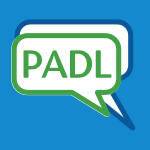141 papers:
 DAC-2015-WangJSX #adaptation #architecture #human-computer #interface
DAC-2015-WangJSX #adaptation #architecture #human-computer #interface- Adaptive compressed sensing architecture in wireless brain-computer interface (AW, ZJ, CS, WX), p. 6.
 DATE-2015-0001B #clustering #energy #manycore #performance
DATE-2015-0001B #clustering #energy #manycore #performance- A ultra-low-energy convolution engine for fast brain-inspired vision in multicore clusters (FC, LB), pp. 683–688.
 DATE-2015-NguyenASS #gpu #simulation
DATE-2015-NguyenASS #gpu #simulation- Accelerating complex brain-model simulations on GPU platforms (HADN, ZAA, GS, CS), pp. 974–979.
 CHI-2015-AndersonKJEHV #how #polymorphism
CHI-2015-AndersonKJEHV #how #polymorphism- How Polymorphic Warnings Reduce Habituation in the Brain: Insights from an fMRI Study (BBA, CBK, JLJ, DE, SH, AV), pp. 2883–2892.
 CHI-2015-JohnsonWCW #difference #experience #game studies #process
CHI-2015-JohnsonWCW #difference #experience #game studies #process- Cooperative Game Play with Avatars and Agents: Differences in Brain Activity and the Experience of Play (DJ, PW, MC, CW), pp. 3721–3730.
 CHI-2015-MentisSPFS #programming
CHI-2015-MentisSPFS #programming- Being Seen: Co-Interpreting Parkinson’s Patient’s Movement Ability in Deep Brain Stimulation Programming (HMM, RS, SP, PF, LS), pp. 511–520.
 DHM-HM-2015-WangTTTGH15a #analysis #process
DHM-HM-2015-WangTTTGH15a #analysis #process- Brain Activity Analysis on “Kana-Ami” Making Process (ZW, KiT, TT, YT, AG, HH), pp. 212–219.
 DUXU-DD-2015-BarrosSRTBS #approach #human-computer #interface #usability
DUXU-DD-2015-BarrosSRTBS #approach #human-computer #interface #usability- A Usability Study of a Brain-Computer Interface Apparatus: An Ergonomic Approach (RQB, GS, CR, RT, MQB, MMS), pp. 224–236.
 HCI-DE-2015-Chae #case study
HCI-DE-2015-Chae #case study- A Study on the Relationships Between Drivers’ Emotions and Brain Signals (SC), pp. 468–476.
 HCI-DE-2015-CrawfordAJRG #evaluation #experience #interactive #towards #user interface
HCI-DE-2015-CrawfordAJRG #evaluation #experience #interactive #towards #user interface- User Experience Evaluation Towards Cooperative Brain-Robot Interaction (CSC, MA, FJ, SR, JEG), pp. 184–193.
 KDD-2015-VeeriahDQ #architecture #learning #predict
KDD-2015-VeeriahDQ #architecture #learning #predict- Deep Learning Architecture with Dynamically Programmed Layers for Brain Connectome Prediction (VV, RD, GJQ), pp. 1205–1214.
 KDD-2015-YangSJWDY #learning #visual notation
KDD-2015-YangSJWDY #learning #visual notation- Structural Graphical Lasso for Learning Mouse Brain Connectivity (SY, QS, SJ, PW, ID, JY), pp. 1385–1394.
 DATE-2014-RoySFY
DATE-2014-RoySFY- Brain-inspired computing with spin torque devices (KR, MS, DF, KY), pp. 1–6.
 ITiCSE-2014-SabitzerP #education #programming
ITiCSE-2014-SabitzerP #education #programming- Brain-based teaching in programming courses (BS, SP), p. 355.
 CHI-2014-AferganPSJHBCJ #metric #using
CHI-2014-AferganPSJHBCJ #metric #using- Dynamic difficulty using brain metrics of workload (DA, EMP, ETS, AJ, SWH, ETB, RC, RJKJ), pp. 3797–3806.
 CHI-2014-ORourkeHBDP #education #game studies #persistent
CHI-2014-ORourkeHBDP #education #game studies #persistent- Brain points: a growth mindset incentive structure boosts persistence in an educational game (EO, KH, CB, CSD, ZP), pp. 3339–3348.
 DUXU-DI-2014-PaulinBA #case study #experience #user interface
DUXU-DI-2014-PaulinBA #case study #experience #user interface- The Study of the Relations between the BrainHex Player Profiles, MBTI Psychological Types and Emotions as Means to Enhance User Experience (REP, ALB, MMA), pp. 732–741.
 DUXU-DP-2014-ShimizuINMHKWK #process
DUXU-DP-2014-ShimizuINMHKWK #process- Consideration for Interpretation of Brain Activity Pattern during Car Driving Based on Human Movements (SS, HI, HN, FM, NH, SK, EW, SK), pp. 458–468.
 DUXU-TMT-2014-InoueSNTMHKWK #physics #process
DUXU-TMT-2014-InoueSNTMHKWK #physics #process- Attempts to Quantitative Analyze for the Change of Human Brain Activity with Physical and Psychological Load (HI, SS, HN, TT, FM, NH, SK, EW, SK), pp. 240–249.
 HCI-AIMT-2014-RederMFK #arduino #concept #human-computer #interactive #interface #proving
HCI-AIMT-2014-RederMFK #arduino #concept #human-computer #interactive #interface #proving- Neural Interface Emotiv EPOC and Arduino: Brain-Computer Interaction in a Proof of Concept (EER, ARdQM, VRTF, FK), pp. 612–623.
 HCI-AIMT-2014-TawatsujiMM #reasoning #towards
HCI-AIMT-2014-TawatsujiMM #reasoning #towards- Proposal for the Model of Occurrence of Negative Response toward Humanlike Agent Based on Brain Function by Qualitative Reasoning (YT, KM, TM), pp. 768–778.
 HCI-TMT-2014-Zuanon #design #interactive #named #process
HCI-TMT-2014-Zuanon #design #interactive #named #process- Design-Neuroscience: Interactions between the Creative and Cognitive Processes of the Brain and Design (RZ), pp. 167–174.
 ICPR-2014-HavaeiJL #classification #interactive #performance #segmentation
ICPR-2014-HavaeiJL #classification #interactive #performance #segmentation- Efficient Interactive Brain Tumor Segmentation as Within-Brain kNN Classification (MH, PMJ, HL), pp. 556–561.
 ICPR-2014-LefevreAG #clustering
ICPR-2014-LefevreAG #clustering- Brain Lobes Revealed by Spectral Clustering (JL, GA, DG), pp. 562–567.
 ICPR-2014-OnalAVFOOY #analysis #modelling
ICPR-2014-OnalAVFOOY #analysis #modelling- Modeling the Brain Connectivity for Pattern Analysis (IO, EA, BV, OF, MO, IÖ, FTYV), pp. 3339–3344.
 ICPR-2014-SuDAGSLLPLLT #automation #predict
ICPR-2014-SuDAGSLLPLLT #automation #predict- Automated Prediction of Glasgow Outcome Scale for Traumatic Brain Injury (BS, TAD, AKA, TG, TS, SL, CCTL, BCP, CKL, TYL, CLT), pp. 3245–3250.
 ICPR-2014-WangZZ #segmentation
ICPR-2014-WangZZ #segmentation- An Improved BET Method for Brain Segmentation (LW, ZZ, RZ), pp. 3221–3226.
 ICPR-2014-ZhouHG #predict
ICPR-2014-ZhouHG #predict- Exploring Brain Tumor Heterogeneity for Survival Time Prediction (MZ, LOH, DBG), pp. 580–585.
 KDD-2014-PapalexakisFSTMF #algorithm #challenge #multi
KDD-2014-PapalexakisFSTMF #algorithm #challenge #multi- Good-enough brain model: challenges, algorithms and discoveries in multi-subject experiments (EEP, AF, NDS, PPT, TMM, CF), pp. 95–104.
 SIGIR-2014-EugsterRSKBRJK #predict
SIGIR-2014-EugsterRSKBRJK #predict- Predicting term-relevance from brain signals (MJAE, TR, MMAS, IK, OB, NR, GJ, SK), pp. 425–434.
 ITiCSE-2013-SabitzerS #concept #education #programming
ITiCSE-2013-SabitzerS #concept #education #programming- Brain-based programming: a new concept for computer science education (BS, SS), p. 345.
 CHI-2013-AlperBRIF #analysis #comparison #graph
CHI-2013-AlperBRIF #analysis #comparison #graph- Weighted graph comparison techniques for brain connectivity analysis (BA, BB, NHR, TI, JDF), pp. 483–492.
 CHI-2013-PeckYOJC #interface #using #visualisation
CHI-2013-PeckYOJC #interface #using #visualisation- Using fNIRS brain sensing to evaluate information visualization interfaces (EMP, BFY, AO, RJKJ, RC), pp. 473–482.
 DHM-HB-2013-IkenoboKKGK #case study #process
DHM-HB-2013-IkenoboKKGK #case study #process- A Study of the Effect of the Shape, the Color, and the Texture of Ikebana on a Brain Activity (YI, YK, NK, AG, AK), pp. 59–65.
 DUXU-CXC-2013-DuckworthTSW #design #interactive
DUXU-CXC-2013-DuckworthTSW #design #interactive- Designing Co-located Tabletop Interaction for Rehabilitation of Brain Injury (JD, PRT, DS, PHW), pp. 391–400.
 HCI-III-2013-KimKAPW #analysis #artificial reality #social
HCI-III-2013-KimKAPW #analysis #artificial reality #social- Brain Function Connectivity Analysis for Recognizing Different Relation of Social Emotion in Virtual Reality (JK, DK, SA, SP, MCW), pp. 441–447.
 HCI-III-2013-LinWWJ #for free #human-computer #interface #mobile
HCI-III-2013-LinWWJ #for free #human-computer #interface #mobile- A Mobile Brain-Computer Interface for Freely Moving Humans (YPL, YW, CSW, TPJ), pp. 448–453.
 KDIR-KMIS-2013-Castro-Caldas
KDIR-KMIS-2013-Castro-Caldas- The Working Brain — Windows to the Outside World (ACC), pp. 1–13.
 CHI-2012-SoloveySSSFJ #interactive #named #streaming
CHI-2012-SoloveySSSFJ #interactive #named #streaming- Brainput: enhancing interactive systems with streaming fnirs brain input (ETS, PWS, MS, AS, SF, RJKJ), pp. 2193–2202.
 ICEIS-v3-2012-BrixiKN #human-computer #interface #research #usability
ICEIS-v3-2012-BrixiKN #human-computer #interface #research #usability- Computer-Brain Interface Device Experimental Research — Study of Ergonomy and Usability in Business Environment (RB, JK, PN), pp. 86–90.
 ICML-2012-VaroquauxGT #clustering #correlation #design
ICML-2012-VaroquauxGT #clustering #correlation #design- Small-sample brain mapping: sparse recovery on spatially correlated designs with randomization and clustering (GV, AG, BT), p. 178.
 ICPR-2012-ElnakibNCPGE #3d #analysis #quantifier #using
ICPR-2012-ElnakibNCPGE #3d #analysis #quantifier #using- Quantification of age-related brain cortex change using 3D shape analysis (AE, MN, MC, HYP, GLG, AEB), pp. 41–44.
 ICPR-2012-OReillyP
ICPR-2012-OReillyP- Looking for the brain stroke signature (CO, RP), pp. 1811–1814.
 ICPR-2012-SimoesSW #detection #image #using
ICPR-2012-SimoesSW #detection #image #using- Using local texture maps of brain MR images to detect Mild Cognitive Impairment (RS, CHS, AMvCvW), pp. 153–156.
 ICPR-2012-ZhangFLZG #online
ICPR-2012-ZhangFLZG #online- Online ICP forecast for patients with traumatic brain injury (FZ, MF, LYL, ZZ, CG), pp. 37–40.
 ICPR-2012-ZhangZX #segmentation
ICPR-2012-ZhangZX #segmentation- MRI segmentation of brain tissue based on spatial prior and neighboring pixels affinities (ZZ, QZ, YX), pp. 89–92.
 MLDM-2012-KalpakisYHMSSS #analysis #permutation #predict #using
MLDM-2012-KalpakisYHMSSS #analysis #permutation #predict #using- Outcome Prediction for Patients with Severe Traumatic Brain Injury Using Permutation Entropy Analysis of Electronic Vital Signs Data (KK, SY, PFMH, CFM, LGS, DMS, TMS), pp. 415–426.
 VLDB-2011-OReilly #towards
VLDB-2011-OReilly #towards- Towards a Global Brain (TO), p. 693.
 CHI-2011-HirshfieldGHHRWWJ #functional #interface #testing #usability
CHI-2011-HirshfieldGHHRWWJ #functional #interface #testing #usability- This is your brain on interfaces: enhancing usability testing with functional near-infrared spectroscopy (LMH, RG, SHH, SWH, MR, RW, TW, RJKJ), pp. 373–382.
 CHI-2011-OHaraSH #human-computer #interactive
CHI-2011-OHaraSH #human-computer #interactive- Embodiment in brain-computer interaction (KO, AS, RHRH), pp. 353–362.
 CHI-2011-QuekBWMTPST #design #development #human-computer #interactive #interface #simulation #social
CHI-2011-QuekBWMTPST #design #development #human-computer #interactive #interface #simulation #social- Simulating the feel of brain-computer interfaces for design, development and social interaction (MQ, DB, JW, RMS, MT, SP, MS, MT), pp. 25–28.
 CHI-2011-SoloveyLCWPSSFSGJ #adaptation #multi #user interface
CHI-2011-SoloveyLCWPSSFSGJ #adaptation #multi #user interface- Sensing cognitive multitasking for a brain-based adaptive user interface (ETS, FL, KC, DW, MP, MS, AS, SF, PWS, AG, RJKJ), pp. 383–392.
 CSCW-2011-Masih #requirements #towards
CSCW-2011-Masih #requirements #towards- Towards requirements engineering for a tumour removing robot: work-practice observation of surgical teams performing brain tumour surgery (AM), pp. 677–680.
 DHM-2011-WelkePRJ #analysis #how #modelling #validation #what
DHM-2011-WelkePRJ #analysis #how #modelling #validation #what- What Is Human? How the Analysis of Brain Dynamics Can Help to Improve and Validate Driver Models (SW, JP, MR, TJ), pp. 513–522.
 HCI-DDA-2011-PeregoTGA #evaluation #human-computer #interface
HCI-DDA-2011-PeregoTGA #evaluation #human-computer #interface- Psychometric Evaluation with Brain-Computer Interface (PP, ACT, CG, GA), pp. 406–413.
 HCI-ITE-2011-EdlingerHG #human-computer #hybrid #interface #smarttech
HCI-ITE-2011-EdlingerHG #human-computer #hybrid #interface #smarttech- A Hybrid Brain-Computer Interface for Smart Home Control (GE, CH, CG), pp. 417–426.
 HIMI-v1-2011-TakahashiSHNIHKWK #analysis #process
HIMI-v1-2011-TakahashiSHNIHKWK #analysis #process- Basic Study of Analysis of Human Brain Activities during Car Driving (NT, SS, YH, HN, HI, NH, SK, EW, SK), pp. 627–635.
 CIKM-2011-DengZFX #approach #in memory #memory management
CIKM-2011-DengZFX #approach #in memory #memory management- Information re-finding by context: a brain memory inspired approach (TD, LZ, LF, WX), pp. 1553–1558.
 KDD-2011-HuangLYFCWR #effectiveness #modelling #network
KDD-2011-HuangLYFCWR #effectiveness #modelling #network- Brain effective connectivity modeling for alzheimer’s disease by sparse gaussian bayesian network (SH, JL, JY, AF, KC, TW, ER), pp. 931–939.
 KDIR-2011-MauleKR #approach #automation #using
KDIR-2011-MauleKR #approach #automation #using- Automated Approach for Whole Brain Infarction Core Delineation — Using Non-contrast and Computed Tomography Angiography (PM, JK, VR), pp. 433–437.
 ICSM-2010-OlbrichCS #case study #evolution #open source #smell
ICSM-2010-OlbrichCS #case study #evolution #open source #smell- Are all code smells harmful? A study of God Classes and Brain Classes in the evolution of three open source systems (SMO, DC, DIKS), pp. 1–10.
 CHI-2010-SjolieBEEJN #3d #process
CHI-2010-SjolieBEEJN #3d #process- Effects of interactivity and 3D-motion on mental rotation brain activity in an immersive virtual environment (DS, KB, EE, JE, LEJ, LN), pp. 869–878.
 CHI-2010-YukselDTS #human-computer #interface #multi #novel #using
CHI-2010-YukselDTS #human-computer #interface #multi #novel #using- A novel brain-computer interface using a multi-touch surface (BFY, MD, JT, AS), pp. 855–858.
 ICPR-2010-AmcalarC #design #evaluation #human-computer #implementation #interface #realtime
ICPR-2010-AmcalarC #design #evaluation #human-computer #implementation #interface #realtime- Design, Implementation and Evaluation of a Real-Time P300-based Brain-Computer Interface System (AA, MÇ), pp. 117–120.
 ICPR-2010-AngGLLNC #human-computer #interface
ICPR-2010-AngGLLNC #human-computer #interface- A Brain-Computer Interface for Mental Arithmetic Task from Single-Trial Near-Infrared Spectroscopy Brain Signals (KKA, CG, KL, JQL, SN, BC), pp. 3764–3767.
 ICPR-2010-ArgunsahC #approach #classification #human-computer #interface
ICPR-2010-ArgunsahC #approach #classification #human-computer #interface- AR-PCA-HMM Approach for Sensorimotor Task Classification in EEG-based Brain-Computer Interfaces (AOA, MÇ), pp. 113–116.
 ICPR-2010-ChenNW #estimation #multi #using
ICPR-2010-ChenNW #estimation #multi #using- Actual Midline Estimation from Brain CT Scan Using Multiple Regions Shape Matching (WC, KN, KW), pp. 2552–2555.
 ICPR-2010-ChoPPKKALL #hybrid #segmentation #using
ICPR-2010-ChoPPKKALL #hybrid #segmentation #using- Level-Set Segmentation of Brain Tumors Using a New Hybrid Speed Function (WC, JP, SYP, SHK, SWK, GA, MEL, GL), pp. 1545–1548.
 ICPR-2010-EklundAOYK #communication #interface #realtime #using
ICPR-2010-EklundAOYK #communication #interface #realtime #using- A Brain Computer Interface for Communication Using Real-Time fMRI (AE, MTA, HO, AY, HK), pp. 3665–3669.
 ICPR-2010-MehtaSJBJ
ICPR-2010-MehtaSJBJ- Recognizing Sign Language from Brain Imaging (NAM, TS, MMJ, KOB, GAJ), pp. 3842–3845.
 ICPR-2010-SattiGCP #adaptation #human-computer #interface
ICPR-2010-SattiGCP #adaptation #human-computer #interface- A Covariate Shift Minimisation Method to Alleviate Non-stationarity Effects for an Adaptive Brain-Computer Interface (ARS, CG, DC, GP), pp. 105–108.
 ICPR-2010-SoldeaESU #approach #image #segmentation #using
ICPR-2010-SoldeaESU #approach #image #segmentation #using- Segmentation of Anatomical Structures in Brain MR Images Using Atlases in FSL — A Quantitative Approach (OS, AE, DFS, DU, MÇ, AE, MGU, ZF, MC), pp. 2592–2595.
 ICPR-2010-SonaA #multi #random
ICPR-2010-SonaA #multi #random- Multivariate Brain Mapping by Random Subspaces (DS, PA), pp. 2576–2579.
 ICPR-2010-SunB #3d #detection
ICPR-2010-SunB #3d #detection- 3D Filtering for Injury Detection in Brain MRI (YS, BB), pp. 2568–2571.
 ICPR-2010-TosunWSRM #analysis #component #image #independence
ICPR-2010-TosunWSRM #analysis #component #image #independence- Joint Independent Component Analysis of Brain Perfusion and Structural Magnetic Resonance Images in Dementia (DT, MW, NS, HJR, BLM), pp. 2720–2723.
 DAC-2009-George #how
DAC-2009-George #how- How to make computers that work like the brain (DG), pp. 420–423.
 DAC-2009-SiegelMP #debugging #performance
DAC-2009-SiegelMP #debugging #performance- Untwist your brain: efficient debugging and diagnosis of complex assertions (MS, AM, CP), pp. 644–647.
 CHI-2009-HirshfieldSGKJSF #adaptation #functional #interface #metric #testing #usability
CHI-2009-HirshfieldSGKJSF #adaptation #functional #interface #metric #testing #usability- Brain measurement for usability testing and adaptive interfaces: an example of uncovering syntactic workload with functional near infrared spectroscopy (LMH, ETS, AG, JK, RJKJ, AS, SF), pp. 2185–2194.
 CHI-2009-SauvanLLC #human-computer #interface #performance
CHI-2009-SauvanLLC #human-computer #interface #performance- A performance model of selection techniques for p300-based brain-computer interfaces (JBS, AL, FL, GC), pp. 2205–2208.
 HCI-NIMT-2009-Allison #adaptation #generative #human-computer #interface
HCI-NIMT-2009-Allison #adaptation #generative #human-computer #interface- The I of BCIs: Next Generation Interfaces for Brain-Computer Interface Systems That Adapt to Individual Users (BZA), pp. 558–568.
 HCI-NIMT-2009-JacksonMBHVSI #interface #paradigm
HCI-NIMT-2009-JacksonMBHVSI #interface #paradigm- Continuous Control Paradigms for Direct Brain Interfaces (MMJ, RLMI, EB, SH, GRV, CS, AI), pp. 588–595.
 HCI-NIMT-2009-NumaoNSKL #adaptation #user interface
HCI-NIMT-2009-NumaoNSKL #adaptation #user interface- Constructive Adaptive User Interfaces Based on Brain Waves (MN, TN, TS, SK, RSL), pp. 596–605.
 HCI-NIMT-2009-SanchezFFP #development #interface #using
HCI-NIMT-2009-SanchezFFP #development #interface #using- Development of Symbiotic Brain-Machine Interfaces Using a Neurophysiology Cyberworkstation (JCS, RJOF, JABF, JCP), pp. 606–615.
 HCI-NIMT-2009-Schalk #human-computer
HCI-NIMT-2009-Schalk #human-computer- Sensor Modalities for Brain-Computer Interfacing (GS), pp. 616–622.
 HCI-NIMT-2009-SellersTSMVM #human-computer #interface #novel
HCI-NIMT-2009-SellersTSMVM #human-computer #interface #novel- A Novel Dry Electrode for Brain-Computer Interface (EWS, PJT, WAS, TM, TMV, RM), pp. 623–631.
 HCI-NT-2009-LeeLS #design
HCI-NT-2009-LeeLS #design- Brain Response to Good and Bad Design (HL, JL, SS), pp. 111–120.
 HIMI-DIE-2009-FuchigamiOT #process
HIMI-DIE-2009-FuchigamiOT #process- Brain Activities Supporting Finger Operations, Analyzed by Neuro-NIRS (MF, AO, HT), pp. 495–504.
 HIMI-DIE-2009-KodaTKS
HIMI-DIE-2009-KodaTKS- f-MRI Study of Brain Activation in Tactile Feeling (YK, MT, YK, NS), pp. 534–542.
 KDD-2009-SunPLCWLRY #estimation #mining
KDD-2009-SunPLCWLRY #estimation #mining- Mining brain region connectivity for alzheimer’s disease study via sparse inverse covariance estimation (LS, RP, JL, KC, TW, JL, ER, JY), pp. 1335–1344.
 SAC-2009-ZhangPB #visualisation
SAC-2009-ZhangPB #visualisation- Task based visualization of 5D brain EIT data (YZ, PJP, RHB), pp. 831–835.
 ICPR-2008-LotteML #design #human-computer #interface #self
ICPR-2008-LotteML #design #human-computer #interface #self- Pattern rejection strategies for the design of self-paced EEG-based Brain-Computer Interfaces (FL, HM, AL), pp. 1–5.
 ICPR-2008-LuGZ #independence #interface
ICPR-2008-LuGZ #independence #interface- Subject-independent brain computer interface through boosting (SL, CG, HZ), pp. 1–4.
 ICPR-2008-Machucho-CadenaCB #using
ICPR-2008-Machucho-CadenaCB #using- Rendering of brain tumors using endoneurosonography (RMC, SdlCR, EBC), pp. 1–4.
 SAC-2008-OliveiraMWS #analysis #locality
SAC-2008-OliveiraMWS #analysis #locality- Brain registration and subtraction — improved localization for SPECT analysis (B.R.A.S.I.L.): a computer-aided diagnosis in epilepsy tool kit (LFdO, PMdAM, LWA, ACS), pp. 1390–1394.
 SAC-2008-SilvaDSSM #analysis #automation #component #segmentation
SAC-2008-SilvaDSSM #analysis #automation #component #segmentation- Automated segmentation and volumetric analysis of brain components on MR imaging (MPS, JRD, FLS, ASdS, DCMS), pp. 1422–1423.
 ITiCSE-2007-Tharp #named
ITiCSE-2007-Tharp #named- Innovating: the importance of right brain skills for computer science graduates (ALT), pp. 126–130.
 DHM-2007-JiangSZLL #analysis
DHM-2007-JiangSZLL #analysis- Shape Analysis of Human Brain with Cognitive Disorders (TJ, FS, WZ, SL, XL), pp. 409–414.
 DHM-2007-WangYLLT #human-computer #interface
DHM-2007-WangYLLT #human-computer #interface- Brain-Computer Interfaces Based on Attention and Complex Mental Tasks (JW, NY, HL, ML, CT), pp. 467–473.
 HCI-IPT-2007-NishimuraRDCSPDD #analysis #functional
HCI-IPT-2007-NishimuraRDCSPDD #analysis #functional- Functional Brain Imaging for Analysis of Reading Effort for Computer-Generated Text (EMN, EDR, BAD, JPC, JS, DP, THD, JHD), pp. 1183–1192.
 HIMI-MTT-2007-FuchigamiOTO #case study #comparative #interface #process
HIMI-MTT-2007-FuchigamiOTO #case study #comparative #interface #process- A Comparative Study of Brain Activities Engaged in Interface Operations by Means of NIRS Trajectory Map (MF, AO, HT, MO), pp. 830–839.
 HIMI-MTT-2007-MullerKDCB #human-computer #machine learning
HIMI-MTT-2007-MullerKDCB #human-computer #machine learning- Machine Learning and Applications for Brain-Computer Interfacing (KRM, MK, GD, GC, BB), pp. 705–714.
 HIMI-MTT-2007-NagaiEK #comprehension #process #using
HIMI-MTT-2007-NagaiEK #comprehension #process #using- Measuring Brain Activities Related to Understanding Using Near-Infrared Spectroscopy (NIRS) (MN, NE, TK), pp. 884–893.
 HIMI-MTT-2007-OmoriHMCT #process
HIMI-MTT-2007-OmoriHMCT #process- Brain Activities Related to Legibility of Text, Studied by Means of Near Infrared Spectroscopy (MO, SH, MM, MC, HT), pp. 894–902.
 HIMI-MTT-2007-TamuraOC #interface #process
HIMI-MTT-2007-TamuraOC #interface #process- NIRS Trajectories in Oxy-Deoxy Hb Plane and the Trajectory Map to Understand Brain Activities Related to Human Interface (HT, MO, MC), pp. 994–1003.
 HIMI-MTT-2007-TouyamaH07a #image #interface
HIMI-MTT-2007-TouyamaH07a #image #interface- Brain Computer Interface Via Stereoscopic Images in CAVE (HT, MH), pp. 1004–1007.
 KDD-2007-ChaovalitwongseFS #classification #process
KDD-2007-ChaovalitwongseFS #classification #process- Support feature machine for classification of abnormal brain activity (WAC, YJF, RCS), pp. 113–122.
 PADL-2007-Bond #declarative #modelling
PADL-2007-Bond #declarative #modelling- BAD, a Declarative Logic-Based Language for Brain Modeling (AHB), pp. 200–214.
 SAC-2007-MilsztajnG #3d #algorithm #markov #random #search-based #segmentation #using
SAC-2007-MilsztajnG #3d #algorithm #markov #random #search-based #segmentation #using- Three-dimensional segmentation of brain tissues using Markov random fields and genetic algorithms (FM, KdG), pp. 745–746.
 CIKM-2006-BaiKCS #functional #image #information retrieval
CIKM-2006-BaiKCS #functional #image #information retrieval- IR principles for content-based indexing and retrieval of functional brain images (BB, PBK, NDC, DS), pp. 828–829.
 ICML-2006-SongE #human-computer #interface #learning
ICML-2006-SongE #human-computer #interface #learning- Classifying EEG for brain-computer interfaces: learning optimal filters for dynamical system features (LS, JE), pp. 857–864.
 ICPR-v1-2006-ZhangG #human-computer #interface #kernel #locality
ICPR-v1-2006-ZhangG #human-computer #interface #kernel #locality- A Kernel-based Signal Localization Method for NIRS Brain-computer Interfaces (HZ, CG), pp. 1158–1161.
 ICPR-v1-2006-ZhuWCW #classification #human-computer #interface #predict
ICPR-v1-2006-ZhuWCW #classification #human-computer #interface #predict- GMM-Based Classification Method for Continuous Prediction in Brain-Computer Interface (XZ, JW, YC, YW), pp. 1171–1174.
 ICPR-v2-2006-HeLL #bias #robust #segmentation
ICPR-v2-2006-HeLL #bias #robust #segmentation- Robust Partial Volume Segmentation with Bias Field Correction in Brain MRI (HH, BL, KL), pp. 175–178.
 SAC-2006-Oltean #multi #named #problem
SAC-2006-Oltean #multi #named #problem- A-Brain: the multiple problems solver (MO), pp. 955–959.
 ITiCSE-2005-PisaFJC #network #research
ITiCSE-2005-PisaFJC #network #research- BRaiN research network (RP, VF, EJ, BC), p. 400.
 CHI-2005-GnanayuthamBC #interface #paradigm #personalisation
CHI-2005-GnanayuthamBC #interface #paradigm #personalisation- Discrete acceleration and personalised tiling as brain?body interface paradigms for neurorehabilitation (PG, CB, GC), pp. 261–270.
 ICML-2005-LalSHP #feedback #interface #online
ICML-2005-LalSHP #feedback #interface #online- A brain computer interface with online feedback based on magnetoencephalography (TNL, MS, NJH, HP, TH, JM, MB, WR, TH, NB, BS), pp. 465–472.
 ICPR-v3-2004-DamLL #automation #interactive #segmentation
ICPR-v3-2004-DamLL #automation #interactive #segmentation- Integrating Automatic and Interactive Brain Tumor Segmentation (ED, ML, MMJL), pp. 790–793.
 ICPR-v3-2004-HuangL #image
ICPR-v3-2004-HuangL #image- Improving MMI with Enhanced-FCM for the Fusion of Brain MR and SPECT Images (CHH, JDL), pp. 562–565.
 ICPR-v3-2004-KovalevK #quantifier
ICPR-v3-2004-KovalevK #quantifier- A New Method for Quantification of Age-Related Brain Changes (VAK, FK), pp. 770–773.
 CHI-2003-KitamuraYHKK #tool support
CHI-2003-KitamuraYHKK #tool support- Things happening in the brain while humans learn to use new tools (YK, YY, HI, FK, MK), pp. 417–424.
 ICEIS-v2-2003-TolbaMGA #algorithm #analysis #image #multi #segmentation #using
ICEIS-v2-2003-TolbaMGA #algorithm #analysis #image #multi #segmentation #using- MR-Brain Image Segmentation Using Gaussian Multiresolution Analysis and the EM Algorithm (MFT, MGM, TFG, MAMS), pp. 165–170.
 VLDB-2002-SantiniG #analysis #geometry #named
VLDB-2002-SantiniG #analysis #geometry #named- GeMBASE: A Geometric Mediator for Brain Analysis with Surface Ensembles (SS, AG), pp. 1075–1078.
 ICPR-v1-2002-HoBG #3d #automation #contest #evolution #segmentation
ICPR-v1-2002-HoBG #3d #automation #contest #evolution #segmentation- Level-Set Evolution with Region Competition: Automatic 3-D Segmentation of Brain Tumors (SH, EB, GG), p. 532–?.
 ICPR-v1-2002-KovalevKC #3d #analysis #image #symmetry
ICPR-v1-2002-KovalevKC #3d #analysis #image #symmetry- Structural Brain Asymmetry as Revealed by 3D Texture Analysis of Anatomical MR Images (VAK, FK, DYvC), p. 808–?.
 ICPR-v1-2002-MoonBLG #modelling #segmentation
ICPR-v1-2002-MoonBLG #modelling #segmentation- Model-Based Brain and Tumor Segmentation (NM, EB, KVL, GG), pp. 528–531.
 ICPR-v1-2002-TuzikovCB #image #optimisation #symmetry #using
ICPR-v1-2002-TuzikovCB #image #optimisation #symmetry #using- Brain Symmetry Plane Computation in MR Images Using Inertia Axes and Optimization (AVT, OC, IB), pp. 516–519.
 ICPR-v1-2002-WollnyTK #analysis #segmentation
ICPR-v1-2002-WollnyTK #analysis #segmentation- Segmentation of Vector Fields by Critical Point Analysis: Application to Brain Deformation (GW, MT, FK), pp. 524–527.
 ICPR-v3-2002-ShihL #interface #visual notation
ICPR-v3-2002-ShihL #interface #visual notation- A Bi-Directional Visual Stereo Interface for Accessing Stereo Matching Results from a Human Brain (SWS, THL), pp. 1039–1042.
 ICPR-v1-2000-BaillardHB #3d #segmentation #set
ICPR-v1-2000-BaillardHB #3d #segmentation #set- Cooperation between Level Set Techniques and Dense 3D Registration for the Segmentation of Brain Structures (CB, PH, CB), pp. 1991–1994.
 ICPR-v2-2000-VarstaHMM #human-computer #interface #performance #set
ICPR-v2-2000-VarstaHMM #human-computer #interface #performance #set- Evaluating the Performance of Three Feature Sets for Brain-Computer Interfaces with an Early Stopping MLP Committee (MV, JH, JdRM, JM), pp. 2907–2910.
 ICPR-v3-2000-RuanFBX #3d #image #segmentation
ICPR-v3-2000-RuanFBX #3d #image #segmentation- Unsupervised Segmentation of Three-Dimensional Brain Images (SR, MJF, DB, JHX), pp. 3409–3412.
 SAC-2000-AguiarDPR #algorithm #named #process #search-based
SAC-2000-AguiarDPR #algorithm #named #process #search-based- EEGSolver — Brain Activity and Genetic Algorithms (PA, AD, SP, ACR), pp. 80–84.
 HCI-CCAD-1999-AttreeRB #artificial reality #assessment #memory management
HCI-CCAD-1999-AttreeRB #artificial reality #assessment #memory management- Virtual reality in assessment and rehabilitation of impaired memory following brain damage (EAA, FDR, BMB), pp. 1100–1104.
 KDD-1999-MegalooikonomouDH #database #image #mining
KDD-1999-MegalooikonomouDH #database #image #mining- Mining Lesion-Deficit Associations in a Brain Image Database (VM, CD, EH), pp. 347–351.
 ICPR-1998-HansenEL #approach #finite #modelling #simulation
ICPR-1998-HansenEL #approach #finite #modelling #simulation- Region-of-interest based finite element modelling of the brain-an approach to brain surgery simulation (KVH, MSE, OVL), pp. 292–296.
 CHI-1996-VelichkovskyH #human-computer #interactive
CHI-1996-VelichkovskyH #human-computer #interactive- New Technological Windows into Mind: There is More in Eyes and Brains for Human-Computer Interaction (BV, JPH), pp. 496–503.
 ICPR-1996-LohmannK #image
ICPR-1996-LohmannK #image- Extracting lines of maximal depth from MR images of the human brain (GL, FK), pp. 518–522.
 ICPR-1996-SammondaNN #convergence #image #network #segmentation
ICPR-1996-SammondaNN #convergence #image #network #segmentation- Hopfield neural network with prespecified time convergence for the segmentation of brain MR images (RS, NN, HN), pp. 462–471.
 ICPR-1996-StockerSVSK #image #network
ICPR-1996-StockerSVSK #image #network- Stability study of some neural networks applied to tissue characterization of brain magnetic resonance images (ADS, OS, AV, OS, TK), pp. 472–476.
 HCI-SHI-1993-OhiwaKST #collaboration #named
HCI-SHI-1993-OhiwaKST #collaboration #named- KJ-Editor: A Collaboration Environment for Brain Storming and Consensus Forming (HO, KK, AS, NT), pp. 939–942.
 DAC-2015-WangJSX #adaptation #architecture #human-computer #interface
DAC-2015-WangJSX #adaptation #architecture #human-computer #interface DATE-2015-0001B #clustering #energy #manycore #performance
DATE-2015-0001B #clustering #energy #manycore #performance DATE-2015-NguyenASS #gpu #simulation
DATE-2015-NguyenASS #gpu #simulation CHI-2015-AndersonKJEHV #how #polymorphism
CHI-2015-AndersonKJEHV #how #polymorphism CHI-2015-JohnsonWCW #difference #experience #game studies #process
CHI-2015-JohnsonWCW #difference #experience #game studies #process CHI-2015-MentisSPFS #programming
CHI-2015-MentisSPFS #programming DHM-HM-2015-WangTTTGH15a #analysis #process
DHM-HM-2015-WangTTTGH15a #analysis #process DUXU-DD-2015-BarrosSRTBS #approach #human-computer #interface #usability
DUXU-DD-2015-BarrosSRTBS #approach #human-computer #interface #usability HCI-DE-2015-Chae #case study
HCI-DE-2015-Chae #case study HCI-DE-2015-CrawfordAJRG #evaluation #experience #interactive #towards #user interface
HCI-DE-2015-CrawfordAJRG #evaluation #experience #interactive #towards #user interface KDD-2015-VeeriahDQ #architecture #learning #predict
KDD-2015-VeeriahDQ #architecture #learning #predict KDD-2015-YangSJWDY #learning #visual notation
KDD-2015-YangSJWDY #learning #visual notation DATE-2014-RoySFY
DATE-2014-RoySFY ITiCSE-2014-SabitzerP #education #programming
ITiCSE-2014-SabitzerP #education #programming CHI-2014-AferganPSJHBCJ #metric #using
CHI-2014-AferganPSJHBCJ #metric #using CHI-2014-ORourkeHBDP #education #game studies #persistent
CHI-2014-ORourkeHBDP #education #game studies #persistent DUXU-DI-2014-PaulinBA #case study #experience #user interface
DUXU-DI-2014-PaulinBA #case study #experience #user interface DUXU-DP-2014-ShimizuINMHKWK #process
DUXU-DP-2014-ShimizuINMHKWK #process DUXU-TMT-2014-InoueSNTMHKWK #physics #process
DUXU-TMT-2014-InoueSNTMHKWK #physics #process HCI-AIMT-2014-RederMFK #arduino #concept #human-computer #interactive #interface #proving
HCI-AIMT-2014-RederMFK #arduino #concept #human-computer #interactive #interface #proving HCI-AIMT-2014-TawatsujiMM #reasoning #towards
HCI-AIMT-2014-TawatsujiMM #reasoning #towards HCI-TMT-2014-Zuanon #design #interactive #named #process
HCI-TMT-2014-Zuanon #design #interactive #named #process ICPR-2014-HavaeiJL #classification #interactive #performance #segmentation
ICPR-2014-HavaeiJL #classification #interactive #performance #segmentation ICPR-2014-LefevreAG #clustering
ICPR-2014-LefevreAG #clustering ICPR-2014-OnalAVFOOY #analysis #modelling
ICPR-2014-OnalAVFOOY #analysis #modelling ICPR-2014-SuDAGSLLPLLT #automation #predict
ICPR-2014-SuDAGSLLPLLT #automation #predict ICPR-2014-WangZZ #segmentation
ICPR-2014-WangZZ #segmentation ICPR-2014-ZhouHG #predict
ICPR-2014-ZhouHG #predict KDD-2014-PapalexakisFSTMF #algorithm #challenge #multi
KDD-2014-PapalexakisFSTMF #algorithm #challenge #multi SIGIR-2014-EugsterRSKBRJK #predict
SIGIR-2014-EugsterRSKBRJK #predict ITiCSE-2013-SabitzerS #concept #education #programming
ITiCSE-2013-SabitzerS #concept #education #programming CHI-2013-AlperBRIF #analysis #comparison #graph
CHI-2013-AlperBRIF #analysis #comparison #graph CHI-2013-PeckYOJC #interface #using #visualisation
CHI-2013-PeckYOJC #interface #using #visualisation DHM-HB-2013-IkenoboKKGK #case study #process
DHM-HB-2013-IkenoboKKGK #case study #process DUXU-CXC-2013-DuckworthTSW #design #interactive
DUXU-CXC-2013-DuckworthTSW #design #interactive HCI-III-2013-KimKAPW #analysis #artificial reality #social
HCI-III-2013-KimKAPW #analysis #artificial reality #social HCI-III-2013-LinWWJ #for free #human-computer #interface #mobile
HCI-III-2013-LinWWJ #for free #human-computer #interface #mobile KDIR-KMIS-2013-Castro-Caldas
KDIR-KMIS-2013-Castro-Caldas CHI-2012-SoloveySSSFJ #interactive #named #streaming
CHI-2012-SoloveySSSFJ #interactive #named #streaming ICEIS-v3-2012-BrixiKN #human-computer #interface #research #usability
ICEIS-v3-2012-BrixiKN #human-computer #interface #research #usability ICML-2012-VaroquauxGT #clustering #correlation #design
ICML-2012-VaroquauxGT #clustering #correlation #design ICPR-2012-ElnakibNCPGE #3d #analysis #quantifier #using
ICPR-2012-ElnakibNCPGE #3d #analysis #quantifier #using ICPR-2012-OReillyP
ICPR-2012-OReillyP ICPR-2012-SimoesSW #detection #image #using
ICPR-2012-SimoesSW #detection #image #using ICPR-2012-ZhangFLZG #online
ICPR-2012-ZhangFLZG #online ICPR-2012-ZhangZX #segmentation
ICPR-2012-ZhangZX #segmentation MLDM-2012-KalpakisYHMSSS #analysis #permutation #predict #using
MLDM-2012-KalpakisYHMSSS #analysis #permutation #predict #using VLDB-2011-OReilly #towards
VLDB-2011-OReilly #towards CHI-2011-HirshfieldGHHRWWJ #functional #interface #testing #usability
CHI-2011-HirshfieldGHHRWWJ #functional #interface #testing #usability CHI-2011-OHaraSH #human-computer #interactive
CHI-2011-OHaraSH #human-computer #interactive CHI-2011-QuekBWMTPST #design #development #human-computer #interactive #interface #simulation #social
CHI-2011-QuekBWMTPST #design #development #human-computer #interactive #interface #simulation #social CHI-2011-SoloveyLCWPSSFSGJ #adaptation #multi #user interface
CHI-2011-SoloveyLCWPSSFSGJ #adaptation #multi #user interface CSCW-2011-Masih #requirements #towards
CSCW-2011-Masih #requirements #towards DHM-2011-WelkePRJ #analysis #how #modelling #validation #what
DHM-2011-WelkePRJ #analysis #how #modelling #validation #what HCI-DDA-2011-PeregoTGA #evaluation #human-computer #interface
HCI-DDA-2011-PeregoTGA #evaluation #human-computer #interface HCI-ITE-2011-EdlingerHG #human-computer #hybrid #interface #smarttech
HCI-ITE-2011-EdlingerHG #human-computer #hybrid #interface #smarttech HIMI-v1-2011-TakahashiSHNIHKWK #analysis #process
HIMI-v1-2011-TakahashiSHNIHKWK #analysis #process CIKM-2011-DengZFX #approach #in memory #memory management
CIKM-2011-DengZFX #approach #in memory #memory management KDD-2011-HuangLYFCWR #effectiveness #modelling #network
KDD-2011-HuangLYFCWR #effectiveness #modelling #network KDIR-2011-MauleKR #approach #automation #using
KDIR-2011-MauleKR #approach #automation #using ICSM-2010-OlbrichCS #case study #evolution #open source #smell
ICSM-2010-OlbrichCS #case study #evolution #open source #smell CHI-2010-SjolieBEEJN #3d #process
CHI-2010-SjolieBEEJN #3d #process CHI-2010-YukselDTS #human-computer #interface #multi #novel #using
CHI-2010-YukselDTS #human-computer #interface #multi #novel #using ICPR-2010-AmcalarC #design #evaluation #human-computer #implementation #interface #realtime
ICPR-2010-AmcalarC #design #evaluation #human-computer #implementation #interface #realtime ICPR-2010-AngGLLNC #human-computer #interface
ICPR-2010-AngGLLNC #human-computer #interface ICPR-2010-ArgunsahC #approach #classification #human-computer #interface
ICPR-2010-ArgunsahC #approach #classification #human-computer #interface ICPR-2010-ChenNW #estimation #multi #using
ICPR-2010-ChenNW #estimation #multi #using ICPR-2010-ChoPPKKALL #hybrid #segmentation #using
ICPR-2010-ChoPPKKALL #hybrid #segmentation #using ICPR-2010-EklundAOYK #communication #interface #realtime #using
ICPR-2010-EklundAOYK #communication #interface #realtime #using ICPR-2010-MehtaSJBJ
ICPR-2010-MehtaSJBJ ICPR-2010-SattiGCP #adaptation #human-computer #interface
ICPR-2010-SattiGCP #adaptation #human-computer #interface ICPR-2010-SoldeaESU #approach #image #segmentation #using
ICPR-2010-SoldeaESU #approach #image #segmentation #using ICPR-2010-SonaA #multi #random
ICPR-2010-SonaA #multi #random ICPR-2010-SunB #3d #detection
ICPR-2010-SunB #3d #detection ICPR-2010-TosunWSRM #analysis #component #image #independence
ICPR-2010-TosunWSRM #analysis #component #image #independence DAC-2009-George #how
DAC-2009-George #how DAC-2009-SiegelMP #debugging #performance
DAC-2009-SiegelMP #debugging #performance CHI-2009-HirshfieldSGKJSF #adaptation #functional #interface #metric #testing #usability
CHI-2009-HirshfieldSGKJSF #adaptation #functional #interface #metric #testing #usability CHI-2009-SauvanLLC #human-computer #interface #performance
CHI-2009-SauvanLLC #human-computer #interface #performance HCI-NIMT-2009-Allison #adaptation #generative #human-computer #interface
HCI-NIMT-2009-Allison #adaptation #generative #human-computer #interface HCI-NIMT-2009-JacksonMBHVSI #interface #paradigm
HCI-NIMT-2009-JacksonMBHVSI #interface #paradigm HCI-NIMT-2009-NumaoNSKL #adaptation #user interface
HCI-NIMT-2009-NumaoNSKL #adaptation #user interface HCI-NIMT-2009-SanchezFFP #development #interface #using
HCI-NIMT-2009-SanchezFFP #development #interface #using HCI-NIMT-2009-Schalk #human-computer
HCI-NIMT-2009-Schalk #human-computer HCI-NIMT-2009-SellersTSMVM #human-computer #interface #novel
HCI-NIMT-2009-SellersTSMVM #human-computer #interface #novel HCI-NT-2009-LeeLS #design
HCI-NT-2009-LeeLS #design HIMI-DIE-2009-FuchigamiOT #process
HIMI-DIE-2009-FuchigamiOT #process HIMI-DIE-2009-KodaTKS
HIMI-DIE-2009-KodaTKS KDD-2009-SunPLCWLRY #estimation #mining
KDD-2009-SunPLCWLRY #estimation #mining SAC-2009-ZhangPB #visualisation
SAC-2009-ZhangPB #visualisation ICPR-2008-LotteML #design #human-computer #interface #self
ICPR-2008-LotteML #design #human-computer #interface #self ICPR-2008-LuGZ #independence #interface
ICPR-2008-LuGZ #independence #interface ICPR-2008-Machucho-CadenaCB #using
ICPR-2008-Machucho-CadenaCB #using SAC-2008-OliveiraMWS #analysis #locality
SAC-2008-OliveiraMWS #analysis #locality SAC-2008-SilvaDSSM #analysis #automation #component #segmentation
SAC-2008-SilvaDSSM #analysis #automation #component #segmentation ITiCSE-2007-Tharp #named
ITiCSE-2007-Tharp #named DHM-2007-JiangSZLL #analysis
DHM-2007-JiangSZLL #analysis DHM-2007-WangYLLT #human-computer #interface
DHM-2007-WangYLLT #human-computer #interface HCI-IPT-2007-NishimuraRDCSPDD #analysis #functional
HCI-IPT-2007-NishimuraRDCSPDD #analysis #functional HIMI-MTT-2007-FuchigamiOTO #case study #comparative #interface #process
HIMI-MTT-2007-FuchigamiOTO #case study #comparative #interface #process HIMI-MTT-2007-MullerKDCB #human-computer #machine learning
HIMI-MTT-2007-MullerKDCB #human-computer #machine learning HIMI-MTT-2007-NagaiEK #comprehension #process #using
HIMI-MTT-2007-NagaiEK #comprehension #process #using HIMI-MTT-2007-OmoriHMCT #process
HIMI-MTT-2007-OmoriHMCT #process HIMI-MTT-2007-TamuraOC #interface #process
HIMI-MTT-2007-TamuraOC #interface #process HIMI-MTT-2007-TouyamaH07a #image #interface
HIMI-MTT-2007-TouyamaH07a #image #interface KDD-2007-ChaovalitwongseFS #classification #process
KDD-2007-ChaovalitwongseFS #classification #process PADL-2007-Bond #declarative #modelling
PADL-2007-Bond #declarative #modelling SAC-2007-MilsztajnG #3d #algorithm #markov #random #search-based #segmentation #using
SAC-2007-MilsztajnG #3d #algorithm #markov #random #search-based #segmentation #using CIKM-2006-BaiKCS #functional #image #information retrieval
CIKM-2006-BaiKCS #functional #image #information retrieval ICML-2006-SongE #human-computer #interface #learning
ICML-2006-SongE #human-computer #interface #learning ICPR-v1-2006-ZhangG #human-computer #interface #kernel #locality
ICPR-v1-2006-ZhangG #human-computer #interface #kernel #locality ICPR-v1-2006-ZhuWCW #classification #human-computer #interface #predict
ICPR-v1-2006-ZhuWCW #classification #human-computer #interface #predict ICPR-v2-2006-HeLL #bias #robust #segmentation
ICPR-v2-2006-HeLL #bias #robust #segmentation SAC-2006-Oltean #multi #named #problem
SAC-2006-Oltean #multi #named #problem ITiCSE-2005-PisaFJC #network #research
ITiCSE-2005-PisaFJC #network #research CHI-2005-GnanayuthamBC #interface #paradigm #personalisation
CHI-2005-GnanayuthamBC #interface #paradigm #personalisation ICML-2005-LalSHP #feedback #interface #online
ICML-2005-LalSHP #feedback #interface #online ICPR-v3-2004-DamLL #automation #interactive #segmentation
ICPR-v3-2004-DamLL #automation #interactive #segmentation ICPR-v3-2004-HuangL #image
ICPR-v3-2004-HuangL #image ICPR-v3-2004-KovalevK #quantifier
ICPR-v3-2004-KovalevK #quantifier CHI-2003-KitamuraYHKK #tool support
CHI-2003-KitamuraYHKK #tool support ICEIS-v2-2003-TolbaMGA #algorithm #analysis #image #multi #segmentation #using
ICEIS-v2-2003-TolbaMGA #algorithm #analysis #image #multi #segmentation #using VLDB-2002-SantiniG #analysis #geometry #named
VLDB-2002-SantiniG #analysis #geometry #named ICPR-v1-2002-HoBG #3d #automation #contest #evolution #segmentation
ICPR-v1-2002-HoBG #3d #automation #contest #evolution #segmentation ICPR-v1-2002-KovalevKC #3d #analysis #image #symmetry
ICPR-v1-2002-KovalevKC #3d #analysis #image #symmetry ICPR-v1-2002-MoonBLG #modelling #segmentation
ICPR-v1-2002-MoonBLG #modelling #segmentation ICPR-v1-2002-TuzikovCB #image #optimisation #symmetry #using
ICPR-v1-2002-TuzikovCB #image #optimisation #symmetry #using ICPR-v1-2002-WollnyTK #analysis #segmentation
ICPR-v1-2002-WollnyTK #analysis #segmentation ICPR-v3-2002-ShihL #interface #visual notation
ICPR-v3-2002-ShihL #interface #visual notation ICPR-v1-2000-BaillardHB #3d #segmentation #set
ICPR-v1-2000-BaillardHB #3d #segmentation #set ICPR-v2-2000-VarstaHMM #human-computer #interface #performance #set
ICPR-v2-2000-VarstaHMM #human-computer #interface #performance #set ICPR-v3-2000-RuanFBX #3d #image #segmentation
ICPR-v3-2000-RuanFBX #3d #image #segmentation SAC-2000-AguiarDPR #algorithm #named #process #search-based
SAC-2000-AguiarDPR #algorithm #named #process #search-based HCI-CCAD-1999-AttreeRB #artificial reality #assessment #memory management
HCI-CCAD-1999-AttreeRB #artificial reality #assessment #memory management KDD-1999-MegalooikonomouDH #database #image #mining
KDD-1999-MegalooikonomouDH #database #image #mining ICPR-1998-HansenEL #approach #finite #modelling #simulation
ICPR-1998-HansenEL #approach #finite #modelling #simulation CHI-1996-VelichkovskyH #human-computer #interactive
CHI-1996-VelichkovskyH #human-computer #interactive ICPR-1996-LohmannK #image
ICPR-1996-LohmannK #image ICPR-1996-SammondaNN #convergence #image #network #segmentation
ICPR-1996-SammondaNN #convergence #image #network #segmentation ICPR-1996-StockerSVSK #image #network
ICPR-1996-StockerSVSK #image #network HCI-SHI-1993-OhiwaKST #collaboration #named
HCI-SHI-1993-OhiwaKST #collaboration #named









